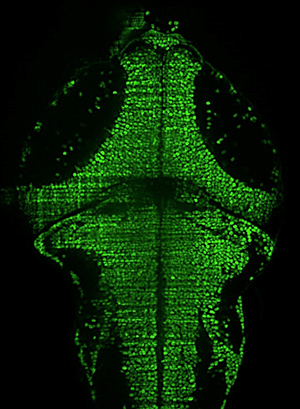Given adult brains have about 100 billion neurons, it is very difficult to hone in on the ones responsible for a certain action. To get closer to neurons, scientists have developed brain-computer interfaces that need to be inserted into the brain, to sit alongside neurons and ‘listen’ in on their activity.
Researchers have been able to isolate and listen to about 200 individual neurons at a time, similar to eavesdropping on 200 conversations, rather than hearing an indistinct crowd murmur.
Neuroscientists and engineers are working to increase this to 1000, even 10,000 neurons. The more neurons we can listen to, the more communication we can decode.
Another goal is to make electrodes more tolerable to the brain. Long-term implantation causes the brain to scar where electrodes are located, which makes the results less effective.
The complex language of neurons
Our 100 billion or so neurons communicate in a very complex language that scientists have not yet been able to translate. By understanding this language, called the neural code, we will be able to better communicate with neurons and build better brain-computer interfaces.
Computational neuroscientists like QBI’s Professor Geoff Goodhill are starting to crack this code, using the tiny zebrafish as a model.
These 4mm-long transparent fish larvae are ideal subjects because scientists can see the simultaneous electrical activity of neurons – up to the 100,000 in the entire fish’s brain!
Professor Goodhill is studying how brain activity patterns in the zebrafish represent stimuli in their environment, and how these patterns change as the fish develops.

His team recently discovered that the sensory environment of the fish is very important for its brain activity to develop correctly.
For example, fish reared in the dark had different brain activity patterns to those in normal light, and were worse at catching prey when the lights were back on.
Researchers believe the basic principles of neural coding—how information is stored and transmitted by brain activity patterns—apply across all animals.

